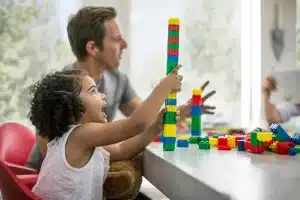The History and Impact of LEGO on Building Blocks
Introduction
Building blocks have long been a source of educational and creative fun for children and adults alike. Among the various brands and toys available, LEGO stands out as one of the most iconic and influential in the world. With its rich history and lasting impact on the world of building blocks, LEGO continues to captivate the imagination of generations. In this article, we will delve into the origins, evolution, and remarkable features of LEGO, highlighting its profound influence on the world of construction toys.
The Origins of LEGO
LEGO, derived from the Danish phrase “leg godt” meaning “play well,” was established in 1932 by Ole Kirk Christiansen. Initially, the company produced wooden toys, but it wasn’t until 1949 that the iconic LEGO brick came into existence. The interlocking brick, with its precise connection method, revolutionized the construction toy industry.
Over the years, LEGO has embraced key principles that fuel its success. Quality, creativity, and imagination are at the core of LEGO’s philosophy, as they are dedicated to providing children with an engaging and enriching play experience.
The Evolution of LEGO
Since the introduction of the LEGO brick, the company has continuously evolved its product line, incorporating new themes, characters, and technological advancements.
- LEGO introduced themed sets, including space, castle, and city themes, allowing children to build and play in various imaginative worlds.
- In 1998, LEGO expanded its product range to include licensed sets based on popular franchises like Star Wars, Harry Potter, and Marvel superheroes.
- In recent years, LEGO embraced robotics and introduced the LEGO Mindstorms line, enabling builders to create programmable robots with intricate functionalities.
This consistent innovation has allowed LEGO to cater to changing trends and maintain its relevance in the competitive toy market.
The Impact of LEGO
LEGO’s impact on children’s development and creativity cannot be overstated. The toy promotes spatial awareness, problem-solving skills, fine motor skills, and encourages imaginative play. Additionally, the modular nature of LEGO bricks allows for endless possibilities and encourages builders to think outside the box.
Moreover, LEGO has played a significant role in popular culture. The LEGO Movie franchise, released in 2014, not only entertained audiences but also created a renewed global fascination with LEGO. The movie’s success spawned sequels and spin-offs, further solidifying LEGO’s influence in the entertainment industry.
Key Features of LEGO
- Interlocking System: The iconic interlocking system of LEGO bricks ensures stability during play and building, providing endless opportunities for creativity and construction.
- Versatility: LEGO bricks are versatile, allowing builders to create a wide range of structures, vehicles, and imaginative worlds.
- Sustainable Practices: LEGO is committed to sustainability and has taken significant steps to reduce its carbon footprint, using plant-based plastics and investing in renewable energy sources.
- Collaborative Play: LEGO promotes collaborative play, fostering teamwork and communication skills among children.
- Educational Value: LEGO offers educational sets that promote STEM (science, technology, engineering, and mathematics) learning, helping children develop critical thinking and problem-solving abilities.
These features contribute to the enduring popularity and appeal of LEGO among children and enthusiasts of all ages.
Conclusion
LEGO’s journey from humble beginnings to becoming a global phenomenon is a testament to its enduring appeal and innovation. The brand’s commitment to quality, creativity, and imagination has made LEGO an integral part of childhood memories and an educational tool that fosters crucial skills in individuals. As LEGO continues to evolve and adapt to the changing dynamics of play, it cements its legacy as the ultimate building block for endless possibilities.





